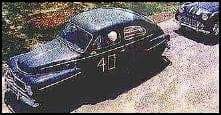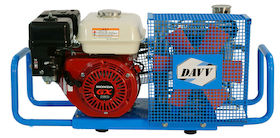
-----
Compressors for powder coating
2003
What kind of compressor is suitable to use in a powder coating shop?
And when you say a drier and pre-treatment what does this consist of
?
I am an auto painter and do a lot of restoration work with my brother.
Is there anyone I can contact who is new to the powder coating or painting business.
I am interested to try to start a business of my own but I don't know enough.
Kevin
Kevin Siffelautomotive paint supplier - Lansdale, PA, U.S.A.
|
2003 A. There are many different variables to consider for compressed air requirements. Typical air "consumers" in the powder coating process are: 1. Powder transfer from hopper to gun tip. Determine what the requirements for your particular application are, and get a compressor that is MORE than adequate for your needs. An air dryer is essential prior to any air input between cleaning and curing of the part. Compressors use oil and generate a ton of moisture, the perfect formula for a cratered finished film. Consult an equipment supplier for size and media recommendations for your particular application. Then there's pretreat. This is the chemical cleaning and conversion coating to the substrate that provides adhesion and corrosion resistance to the powder coated substrate. There is almost an infinite amount of variables that affect the ability of the pretreat process, such as multi-metals, welds, salt spray requirements, casting and cutting oil composition, etc, etc..etc... The best advice I can offer is consult a reputable supplier, maybe a few of them and they can develop a process that best fits your needs. Andy Peal- Grand Rapids, Michigan, USA 2003 Kevin, A. Firstly I know 'naught' about powder coating or painting but when you mentioned the word compressor, I thought that maybe the following is of interest. When welding Polyethylene using air from a central compressor, your weld strengths are NOT particularly good. Why? Because compressors generate moisture and this inhibits the weld strength. There are 2 ways of overcoming this. One is to use Silica Gel (which has to be 'heated' once it turns blue due to moisture absorption in order to rejuvenate it). The other method was NOT to use a compressor but a high pressure fan which, for welding plastics, generated sufficient pressure. Hence I'd assume that if you paint anything, you sure don't want any excess moisture. Yes, you can get cooling coils for compressors which supposedly knock out a lot of the condensate. So IF you must use a central compressor, then use a good design of cooling coils and perhaps silica gel. I hope that the above may be of some interest and help to you.  Freeman Newton [deceased] (It is our sad duty to advise that Freeman passed away April 21, 2012. R.I.P. old friend). |
Q, A, or Comment on THIS thread -or- Start a NEW Thread
